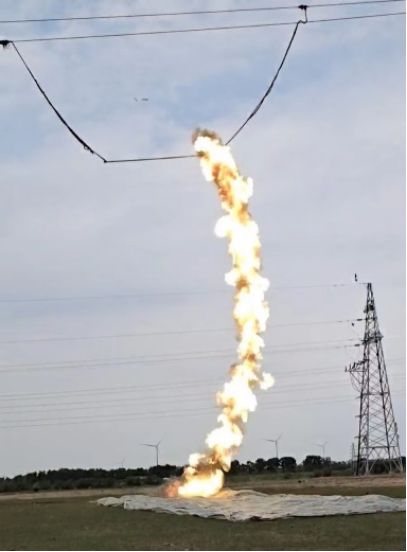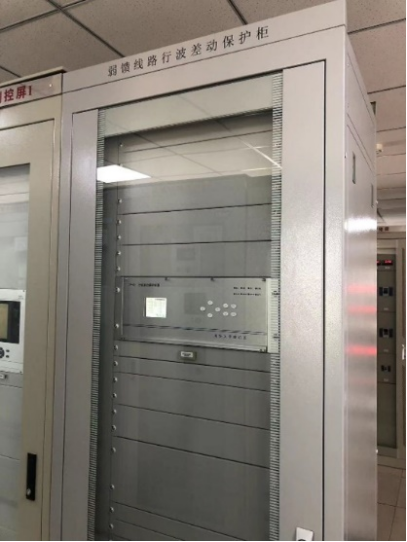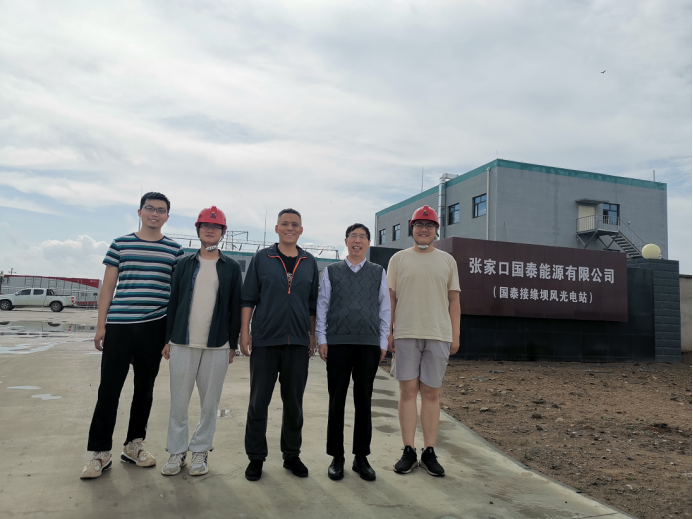On June 19 and 26, the artificial out-of-zone grounding short-circuit and artificial in-zone grounding short-circuit tests were carried out on the 220kV AC transmission lines at the converter station of Zhangbei Flexible DC Project. The 220kV high-voltage AC transmission line traveling wave differential protection device developed by Professor Dong Xinzhou’s team from the Department of Electrical Engineering and Applied Electronics (EEA) correctly identified faults during the tests. It accurately detected faults outside the zone and appropriately operated for faults within the zone. This marks a successful on-site testing of high-voltage AC transmission line traveling wave differential protection technology. This technology effectively addresses the safety protection issues of dual weak-feed lines in new energy power systems and symbolizes a significant advancement in the research on traveling wave protection theory and technology.

On-site artificial short-circuit test

Results of device operation in artificial short-circuit test
The new-type power system with a high proportion of renewable energy integration is a key carrier for achieving the “dual-carbon” goals. The flexible DC grid is an important means to support the flexible and efficient application of renewable energy. In recent years, the proportion of renewable energy integration in China’s power system has been continuously increasing, and flexible DC transmission technology has been maturing. The completion and operation of the Zhangbei Flexible DC Project, as the world’s first flexible DC grid, is a landmark event in the development of China’s power system and a significant contribution of Chinese power workers to the global power system. However, the AC transmission lines at the sending end of the Zhangbei Flexible DC grid represent a typical scenario of dual weak-feed lines. The sending end is a wind farm with low capacity and low short-circuit current levels, and the receiving end is connected to the flexible DC grid with even lower short-circuit currents, making fault characteristics less apparent. For dual weak-feed lines, traditional relay protection systems fail to accurately detect their faults, posing a significant threat and challenge to the safety of the new-type power system and becoming a key technical bottleneck in its development.
Addressing the sensitivity issue of relay protection for dual weak-feed AC transmission lines, Professor Dong Xinzhou’s team proposed a traveling wave differential protection principle suitable for AC transmission lines. This principle takes into account the distributed capacitance current and electrical quantity propagation delay of the lines. Based on this principle, they developed the traveling wave relay protection device TP-02, fundamentally solving the key problem restricting the improvement of relay protection sensitivity. The success of this test confirms the correctness of the traveling wave differential protection theory and the effectiveness of the device.

Cabinet of the dual weak-feed line traveling wave differential protection device
Professor Dong Xinzhou’s team from EEA is the pioneer of fault traveling wave theory and traveling wave protection technology. The ultra-high-voltage DC line traveling wave protection device developed by them has been in operation since 2020, serving the Xinjiang Changji-Anhui Guquan ±1100kV ultra-high-voltage DC transmission project with the highest voltage level, largest transmission capacity, and longest transmission distance in the world, achieving excellent operational results. The success of AC traveling wave differential protection further enriches and perfects the traveling wave protection technology system.

Photograph of some team members

















 News & Events
News & Events